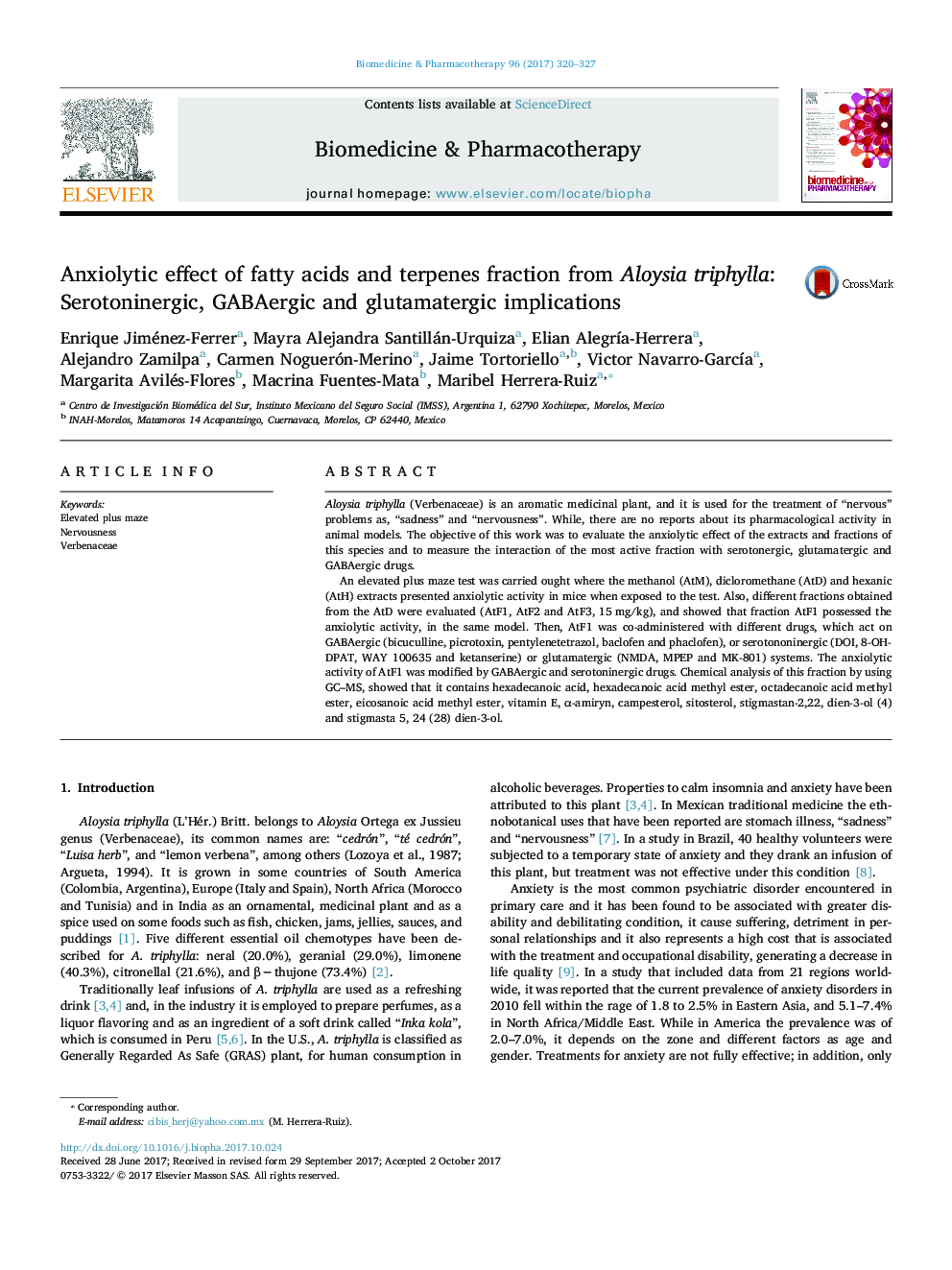| Article ID | Journal | Published Year | Pages | File Type |
|---|---|---|---|---|
| 5552456 | Biomedicine & Pharmacotherapy | 2017 | 8 Pages |
Aloysia triphylla (Verbenaceae) is an aromatic medicinal plant, and it is used for the treatment of “nervous” problems as, “sadness” and “nervousness”. While, there are no reports about its pharmacological activity in animal models. The objective of this work was to evaluate the anxiolytic effect of the extracts and fractions of this species and to measure the interaction of the most active fraction with serotonergic, glutamatergic and GABAergic drugs.An elevated plus maze test was carried ought where the methanol (AtM), dicloromethane (AtD) and hexanic (AtH) extracts presented anxiolytic activity in mice when exposed to the test. Also, different fractions obtained from the AtD were evaluated (AtF1, AtF2 and AtF3, 15 mg/kg), and showed that fraction AtF1 possessed the anxiolytic activity, in the same model. Then, AtF1 was co-administered with different drugs, which act on GABAergic (bicuculline, picrotoxin, pentylenetetrazol, baclofen and phaclofen), or serotononinergic (DOI, 8-OH-DPAT, WAY 100635 and ketanserine) or glutamatergic (NMDA, MPEP and MK-801) systems. The anxiolytic activity of AtF1 was modified by GABAergic and serotoninergic drugs. Chemical analysis of this fraction by using GC-MS, showed that it contains hexadecanoic acid, hexadecanoic acid methyl ester, octadecanoic acid methyl ester, eicosanoic acid methyl ester, vitamin E, α-amiryn, campesterol, sitosterol, stigmastan-2,22, dien-3-ol (4) and stigmasta 5, 24 (28) dien-3-ol.
